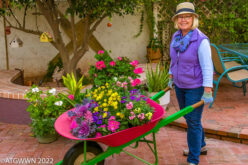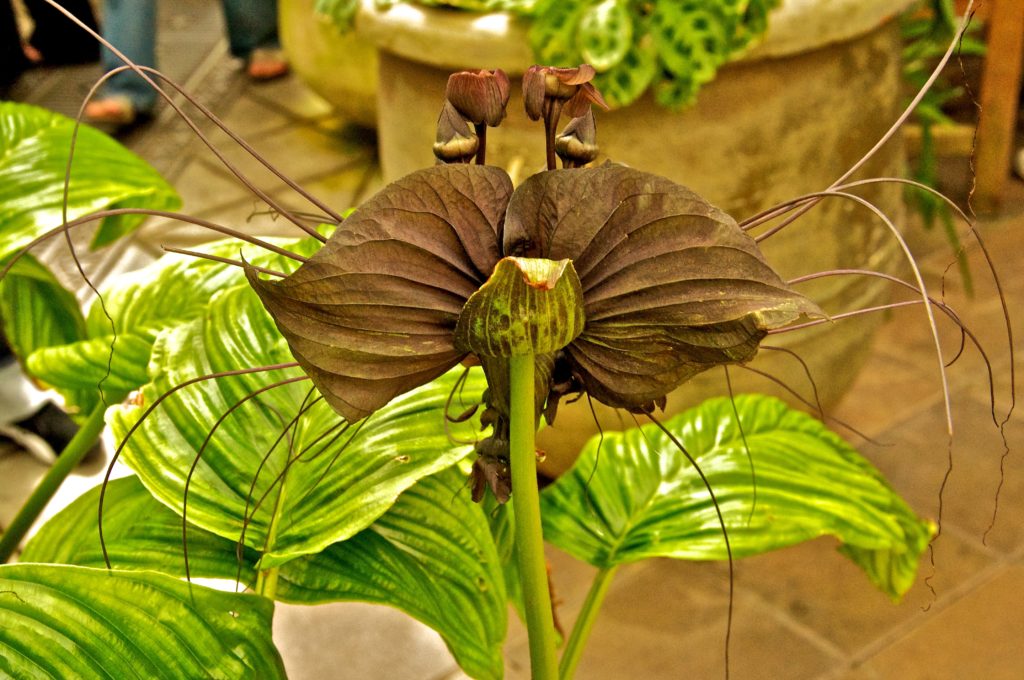
I’m not gardening with all native plants! Life is too short to limit one’s garden to plants that are “indigenous to a given area in geologic time.” Sure there are lots of benefits for that approach in gardens but I’m diversifying. Every garden travel adventure introduces me to new plants. The Missouri Botanical Garden’s Tropico’s plant database reports “Botanists have published more than 1.2 million plant names since 1753,” so there is no way I will ever see all the genus, species, and hybrids. Just thinking of all the possibilities for my little piece of earth makes me do a happy dance. When I find a Bat flower (Tacca chantrieri) blooming in the shape of a flying bat or the African turtle plant, (Dioscorea elephantipes) that grows a big woody base resembling the shell of a turtle, I get curious, I get excited, I want to see if I could grow it in my garden.
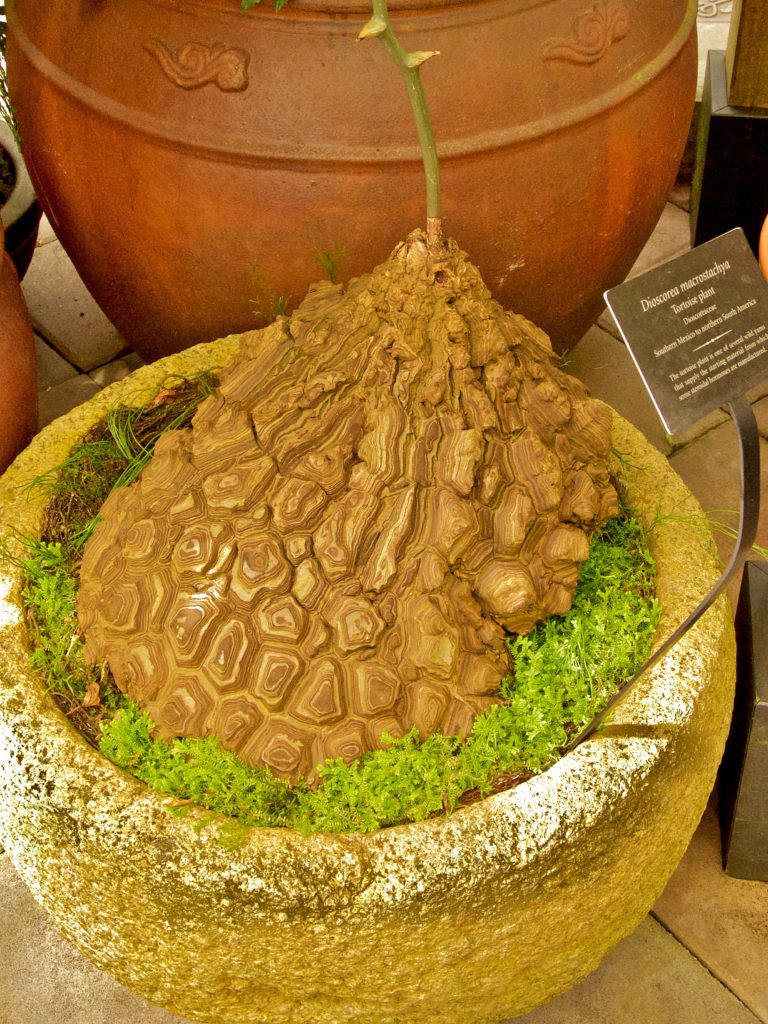
Plants have been traveling the world by bag, boat, wind and wing forever. So I am happy to carry on the carrying of plants to new places.
My trip to New Zealand introduced me to many new plants one I found fascinating is Azorella trifurcata ‘Nana’ Cushion Bolax and I would call it an astroturf ground cover. Now that might not sound desirable as a plant but when I sat on a stone bench at Larnarch Castle in Dunedin there was this green carpet cascading over the back.
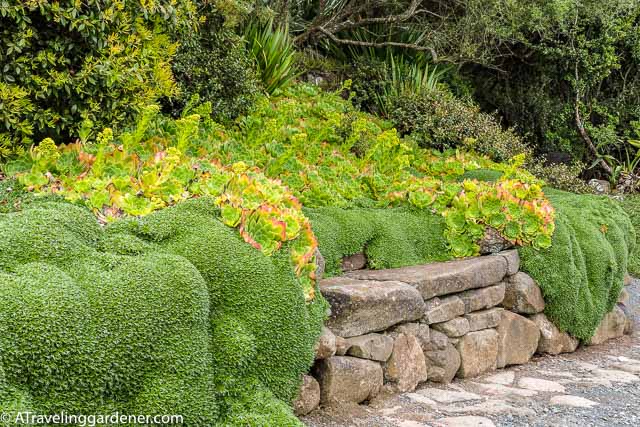
I leaned against it. It was stiff, a bit hard, almost prickly. I wasn’t sure if it was alive, so I poked it, looked deeply into the less than 2” cushion cover it presented. I found the leading edge and turned it up to see if there were roots. There wasn’t any really showing. It looked alive, there was some yellowing underneath, some open space between the leaves, so I slowly realized, it was a plant!
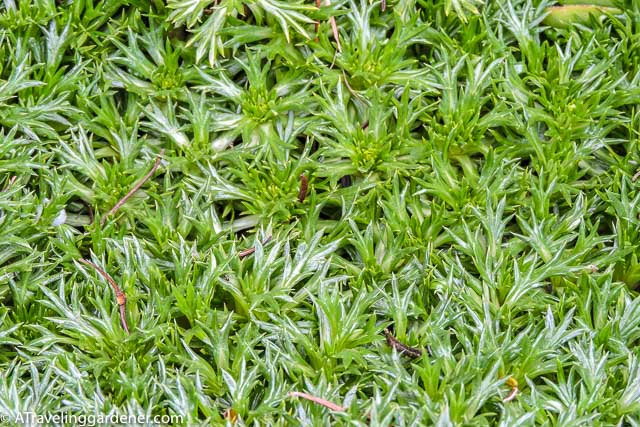
It was a carpet of green, it looked like a carpet of astroturf, or those green plastic door mats that were popular years ago but in a really good way. The question is, which came first, the living plant or the plastic imitation?

I saw the plant again in a rock garden in the Dunedin Botanic Garden and here I was able to track down the name of the plant. Thanks to Rock, Water & Alpine Collection Curator, Robyn Abernathy. After some online searching, I discover that the plant is hardy in USDA zones 4-9 and is available from Far Reaches Farm in Port Townsend, WA. It blooms yellow flowers in the summer. I’d love to have that plant growing in my Zone 9b desert garden. The origin of the plant is thought to be the Falkland Islands and areas of southern Chili, in South America. It is strong enough to withstand the strong cold winds blowing in from the ocean. Realistically it doesn’t sound very promising in my hot dry garden.
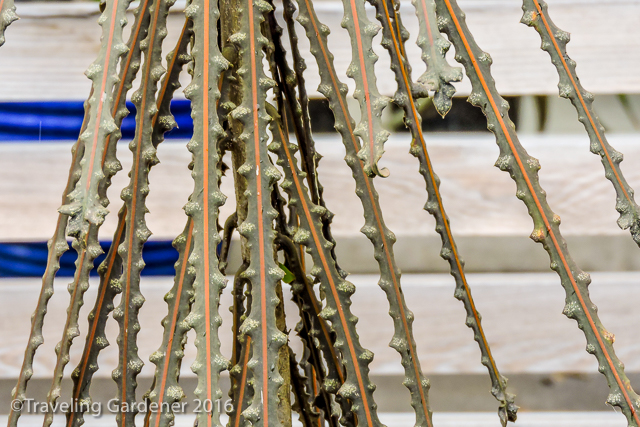
The first time I saw a Lancewood tree I thought someone had crafted it as an art piece. The artful single knobby leaves thrust downward from the small trunk as if a child’s drawing came to life.
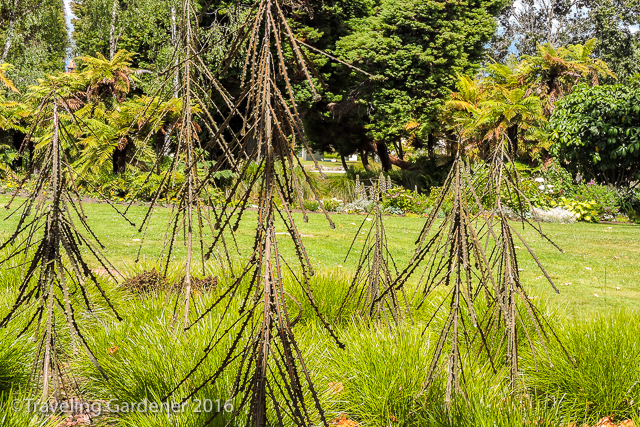
I kept seeing these trees in landscape designs: outside a dining room window, against a wall, at the corner of a patio, not places that could support large trees. Yet the tiny trees seemed to be very popular plants. This was another new to me plant and I needed to know more.
What I found was Lancewood trees, Pseudopanax crassifolius are divaricating plants. Divaricating means having “branches of wide angles and intertangled.” The more I read the more intrigued I became because eventually these tiny trees do grow and change shape becoming a more round-topped tree. About 10% of New Zealand plants are divaricating. Some are wiry shrubs with intertangled growth. Some dramatically change shape from a juvenile form to an adult form making them nearly unrecognizable.
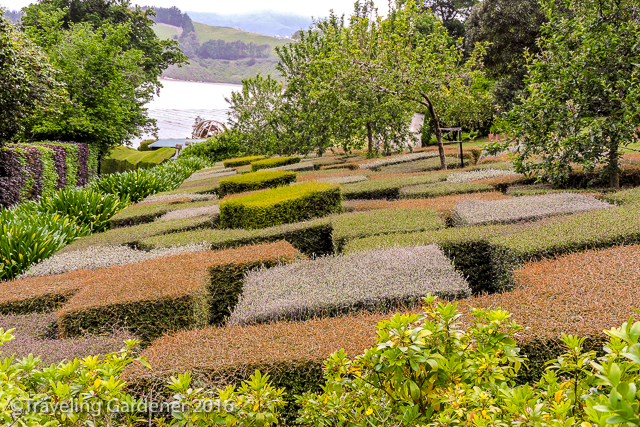
Patchwork quilt design
Mark Chandler, gardener at Ohinetahi, came up with a patchwork quilt effect using the wiry shrubs Kanuka and Crokia in redish brown, green and gray. Using controlled pruning he maintains the plants in their juvenile form. It makes for an artful effect.
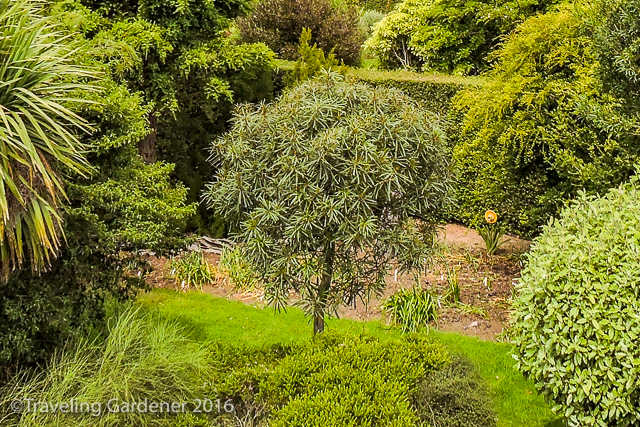
I found a mature Lancewood at the Broadfields Native Garden and in the adult form it blended in with other trees in an unremarkable way. It is not definitive why these plants do this, grow one way when juvenile and then transform as they mature. Shirley Stuart, curator of the Native Plant Collection at Dunedin Botanic Garden writes one theory is that the wiry and leathery leaves aren’t tasty to browsing animals and as a result, they leave the plant alone long enough for it to grow stronger. Another theory is it helps the young plant survive its environmental extremes long enough to become established.
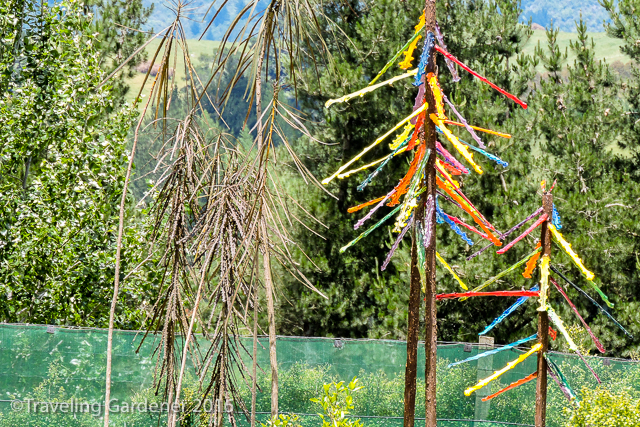
Every time I encountered this tree I was fascinated with its shape. It was extremely difficult to photograph. Wandering through the Lava Glass Garden near Taupo, NZ, I found a Lancewood glass sculpture positioned alongside Lancewood trees. An artist created a colorful imitation of the tree. Now that I could put in my garden.
